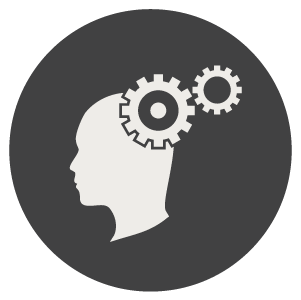4 Ways to Work From Home Better
Working From Home
For over a year now, most professionals have been working from their kitchen table or home office. For some people, this has been a dream. The dreaded commute has been abolished and pants are optional in meetings.
For others, however, this has been a special kind of purgatory where children join the meetings and the home office and home gym share real estate. With our work and home line so intermixed, work-life balance seems as mystical as ever. Thankfully, we can use some brain hacks to make that balance more achievable.
What is the Hippocampus?
Our brain uses cues from our environment to figure out what strategies it should use. This feature originally was used to help us be prepared for danger. If we encountered a predator by the river, a part of our brain called the Hippocampus would form a memory of that encounter and give the location a DANGER tag. That way, when we next would go by the river, our senses would be on high alert and we could more easily escape the danger.
Thankfully, we no longer encounter predators very often, but the Hippocampus has adapted to perform that function for other situations.
Lessons from the Brain
For most of us, home is our safe space. It is where we relax, eat, and spend quality time with our loved ones. In the same way our Hippocampus would signal danger by the river, it signals safety and restoration while we are at home. It would use the sense of space (i.e. where are you: at home) and time (i.e. when, the evening) to prime our brains for those emotions and bodily functions.
Back when office work was a thing, we would travel to a different place (i.e. the office) and time (i.e. time between the commute) to signal we are leaving the place of restoration and prepare for focus and productivity in the workplace.
Unfortunately, we are confusing our poor Hippocampus with this new work from home scenario sending it conflicting messages on if our bodies should be in fight or flight mode for focus or rest and digest mode for relaxation.
For many of us, the result has been the worst of both worlds: being unable to fully relax at home, yet not feeling “in the zone” enough to be productive. This has led many of us to develop feelings of burnout (to learn more, check out our Burnout Courses).
4 Tips to Restore Work Life Balance
To address this problem and help restore our sense of work life balance, here are some brain hacks based on how the Hippocampus works to reduce those mixed messages. They all use the same fundamental strategy of creating the perception of space-time differences between work and home, even if they are the same thing.
A separate office room with a closing door. This is the best way to structure a work-from home set-up because it actually creates a separate space for work that is distinct from home life. Simply closing the door enhances this illusion and has the added bonus of reducing distractions. Of course a closed door never stopped a determined child, but it’s better than nothing! And your Hippocampus can learn to associate that room with work while the rest of our home can be for rest.
A short meditation to bookend the work day. Ok, so you only live in a one-bedroom apartment or have to share the kitchen table with your roommates. If you can’t physically go to a different space for work, you can trick your brain by creating psychological space. Starting and ending your work day with a short meditation exercise can help put you in focus mode at the start of the work day and refresh your mind to leave work behind when you sign off for the night. Here, we will even provide you with a super easy Box-Breathing Exercise anyone can do.
Go for a walk before you relax for the evening. This brain hack uses the same principle of the previous one. Our commute used to function as the start and end of our work day, but commutes have become less effective now that it's from the bedroom to the kitchen or office. If you physically leave the house and go for a walk, you are recreating that sense of leaving work and coming home for the illusion of work life balance. If you turn the walk into a run, or other form of a work out, the physical exertion will enhance this effect.
Plan out fun things to look forward to. If work is overtaking your life’s balance, it's important to create space for fun non-work activities to anticipate. For me, one of the reasons I loved traveling was the sense of urgency to wrap up work things so I could be free from that burden on vacation. The same principle can be applied on a smaller scale, whether it's a call with a loved one, a hike on the weekend, or getting dinner from a favourite restaurant. Give yourself a reason to get your work done so that you can feel rewarded and re-calibrate your brain to have periods of work and rest.
If you enjoyed learning about strategies to create-work life balance, ConsciousWorks has created an entire podcast episode dedicated to the topic. Check out Episode 6 of The Science of Work, Is work-life balance a Myth? To hear from world-leading experts on the topic and learn additional approaches to transitioning from living at work back to simply working from home.
Consciously design your day, or someone else will.
Dr Lisa Belanger
Lisa has a Ph.D. in Behavioural Medicine, an Executive MBA, and is a Certified Exercise Physiologist and High Performance Specialist.









